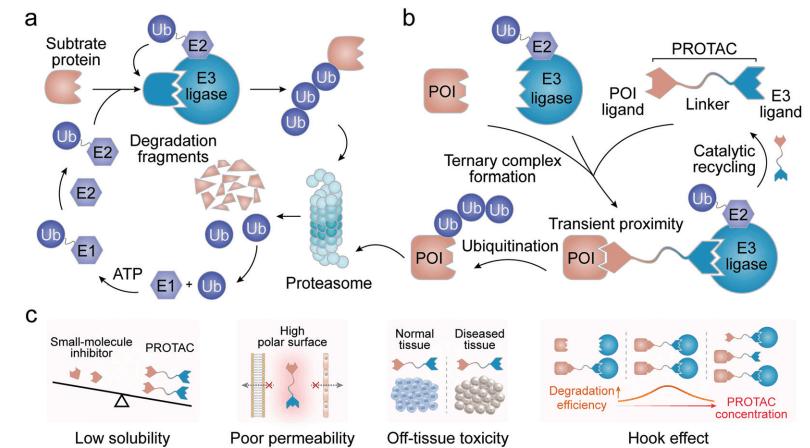
1 minute read
PROTAC Delivery System Recent Research Advances
As an emerging therapeutic strategy for degrading disease-causing target proteins by hijacking the ubiquitin-proteasome system (UPS), PROTACs have the potential to revolutionize trends in the pharmaceutical industry. However, the development of many PROTACs has not been smooth, and most have not made it through the preclinical phase of drug development. There are many reasons for this, and one of the most challenging obstacles is the inability to ensure precise delivery of PROTACs to their targets.
To realize the medical value of PROTRAC for patients, it is important to combine PROTAC with advanced delivery systems to improve its physicochemical properties, enhance its targeting and reduce its off-target side effects. The combination of PROTAC and multifunctional delivery systems will open up new research directions in the field of targeted protein degradation.
Advertisement
Development Challenges of PROTACs
Currently, most traditional therapeutic strategies are based on "occupancy-driven" mode of action to inhibit the function of disease-causing target proteins for disease treatment. Unlike traditional small molecule inhibitors and antagonists, protein degradation technology can address challenges that cannot be addressed by traditional small molecules or biomolecules due to their ability to induce the degradation of disease-causing target proteins. Compared to inhibitors and antibodies, PROTACs have longer-lasting therapeutic effects because they catalyze and irreversibly remove oncogenic proteins
Despite the outstanding features of PROTACs for cancer treatment, their translation to clinical trials has been stalled due to inherent shortcomings in their structural properties.
1. PROTAC has a large molecular weight ( over 800 Da), thus it is poorly soluble in water, resulting in its low bioavailability.
2. The highly polar surface of PROTAC limits its permeability and hinders its ability to cross physiological barriers and cell membranes.
3. Since E3 ligases are widely expressed at disease sites and in normal tissues, this is likely to lead to side effects such as off-targeting of PROTAC.
4. PROTACs with high intracellular concentrations tend to form binary complexes that produce Hook effects, which can reduce target degradation activity and hinder the design of their in vivo dosing.
Poor solubility, poor permeability, low bioavailability, non-specific biodistribution and unpredictable Hook effect hinder the clinical translation of PROTACs.
In addition to modifying the chemical structure of PROTAC molecules to overcome these drawbacks, drug delivery systems can be an effective alternative strategy because they can conveniently govern the overall PK behaviors of PROTACs toward showing better therapeutic outcomes.

